- Shopping in Kochi
- New Year Celebration in Rajasthan
- Christmas in Goa
- Trip from Delhi to Alwar
- New Year Celebration in Goa
- History of Maratha Empire
- New Year in Kochi
- Places of Interest in Gwalior
- Bala Quila, Alwar
- Jet Ski in Goa
- Paradesi Synagogue, Kochi
- Explore Gwalior Fort
- Visiting the Vast History: Kochi Mattancherry Palace
- Heritage Wedding in Rajasthan
- Tourist Attractions in Gwalior
- Hotel in Tijara
- Cabo De Rama Beach
- Matsya Festival
- Trip from Bangalore to Goa
- Tourist Attractions in Patiala You Shouldn't Miss
- Jagannath Mela in Alwar
- Waterfalls in Goa
- Ideal Places for a Short Trip near Delhi
- Hidden Gems in Rajasthan
- Delhi to Sariska National Park: Trip Guide
- Traveller’s Guide to Goa Carnival
- Weekend Trip from Gurgaon
- Trip to Rajasthan with Family
- Delhi to Rishikesh to Nainital
- Delhi to Patiala Tour Guide
- New Year Celebration Near Delhi NCR
- Christmas Celebration in Tijara Fort Palace, Alwar, Rajasthan
- Nainital in the Winter Season
- Sunburn Goa 2024
- Trip to Alwar
- Water Sports in South Goa
- New Year Eve Party in South Goa
- Moosi Maharani Ki Chhatri
- Siliserh Lake
- Must try dishes in Rajasthan
- Best Places to Visit around Jaipur
- Solo Trip to Rajasthan
- Sariska National Park
- Places to visit in Rajasthan in December
- Staycation Near Delhi NCR
- Best Holiday Destinations Near Delhi
- Best Resorts Near Delhi for Family
- Vacations near Delhi
- Goa in Summer Season
- Naina Devi Temple, Nainital
- Best Time to Visit Rishikesh
- Tijara Ji Jain Temple
- Must Visit Historical Sites in South Goa
- Local Food in South Goa
- Traditional Festivals of Rajasthan
- Naina Peak Trek
- Fatehpur Shekhawati
- Activities in Nainital
- Local Food in Tranquebar
- Alwar Famous Food
- Offbeat Places in Nainital
- Offbeat Places in South Goa
- Offbeat Places in Rajasthan
- History of Tharangambadi
- Best time to visit Nainital
- Best Beaches in South Goa
- History of Shekhawati
- The Best Beaches in Tamil Nadu
- Places to Visit in Shekhawati
- New Year Celebration in Nainital
- Weekend Trip in Tamil Nadu
- New Year in Goa
- Nainital Itinerary for 2 Days
- The Best Places to Visit in Patiala
- Places to Visit in Tharangambadi
- South Goa Itinerary for 3 Days
- Tourist Attractions in Alwar
- Kochi 2-day Itinerary
- Things to Do in South Goa
- Places to Visit in Gwalior
- Weekend Getaway from Jaipur
- Best Places to Visit in Alwar
- Best Time to Visit Alwar
- Places to Visit in Alwar
- Best Time to Visit Gwalior
- Literary Connections of Ramgarh: Tagore and Mahadevi Verma
- Things to Do in Alwar in Monsoon
- Exploring the Festivals of Alwar
- Everything You Need to Know About Betul, Goa
- Things to Do in Kochi at Night
- Uttarakhand Itinerary for 7 Days
- Best Time to Visit Kochi
- Visit The Mesmerising Hill Stations in South India
- The Best Places to Visit Near Nainital
- A Weekend Getaway to Ramgarh: Travel Guide
- Explore The Magical Cochin Backwaters
- The Majestic Coonoor to Ooty Toy Train
- The Best Vacation Spots Near Chennai
- Must Visit Places in Kerala
- Destination Wedding in Rajasthan
- Exploring the Orchards in Ramgarh
- Explore the Museums of Tranquebar
- Masilamani Nathar Temple, Tharangambadi
- Things to Do in Kesroli
- Best Places to Visit in South India in January
- Exploring the Tamil Nadu Coastline
- Places to Visit in Gwalior at Night
- Places to visit in Rajasthan in Winter
- Unexplored Treasures of Uttarakhand
- A Visit to Mangalavanam Bird Sanctuary
- Royal Rajasthani Weddings
- Rajasthan Itinerary for 7 days
- Into the Wilderness of Rajasthan’s National Parks
- Explore the Historic Town of Neemrana, Rajasthan
- Enchanting Lakes of Nainital
- A Dive Into the Royal History of Alwar
- Trails and Treks near Nainital
- The Seven Most Frequented Places in Rishikesh
- Kochi: The Queen of the Arabian Sea
- Fairy Queen: The Oldest Working Steam Locomotive
- Forts and Palaces of Alwar
- The Unparalleled Art and Culture of Madhya Pradesh
- Best Beaches To Visit in Cochin
- A Spiritual Journey to the Temples in Alwar
- Handicrafts of Rajasthan
- Places to Eat Street Food in Gwalior
- Wellness Retreats in Rishikesh
- The Danish History of Tranquebar
- Of Mystical Spaces and Hidden Treasures
- Rehabilitating Our Roots in Ruins... A Meet with Mr Aman Nath
- Our Annual Getaway to the Ramgarh Bungalows
- Experience Gwalior The Royal Way With Deo Bagh
- Living it up at a 14th Century Fort
- The Best of Both Worlds - Delhi and Jaipur
- Alwar City - Attractions
- Gwalior - The Tourist Capital
- Drivable Weekend Getaway from Delhi-NCR
- Hiking and Trekking Trails near Jaipur
- Safe Weekend Getaway from Delhi
- Trek Trails from Rishikesh
- Things to do Around Tranquebar Fort
- Majestic Temples of Gwalior
- Tea Plantations of Coonoor
- Fort Stay in Alwar
- Best Places to Visit in Tamil Nadu
- Shopping in Gwalior
- The Chinese Fishing Nets of Kochi
- Exotic Swimming Experiences near Delhi
- Ketty Valley, The Second Largest Gorge in the World
Gwalior, up in northern Madhya Pradesh, is a city full of stories. Its fort towers over the city, palaces are dotted with intricate carvings, and ancient temples seem to whisper tales from centuries ago. Everywhere you look, there’s a bit of history waiting to be discovered. When it comes to Gwalior sightseeing places, you’ve got plenty to choose from: majestic forts, ornate temples, and grand palaces that tell their own story. But Gwalior isn’t just about the past. Known as the ‘Music City of India’, melodies drift through busy markets, echo in grand halls, and pop up in festivals that light up the streets. Whether you’re into history, culture, or just exploring new places, Gwalior has something for everyone. Stones, music, festivals, and stories, they’re all around, waiting for you to notice and enjoy.
Gwalior Fort and Nearby Monuments: History and Heritage
1. Gwalior Fort: Walk Through the Regal Ramparts
The Gwalior Fort, famously called the ‘Gibraltar of India’, dominates the city’s skyline with its steep sandstone cliffs and imposing hilltop presence. This nearly impregnable fortress has stood witness to centuries of history, with rulers from the Guptas and Tomars to the Mughals and Scindias leaving their mark on its towering ramparts. Within the fort, the Sas Bahu Temples offer a glimpse into 11th-century craftsmanship, showcasing intricately designed North Indian Bhumija-style spires, a jagati platform, an entrance porch, and a mandapa that reflect the architectural mastery of the era.
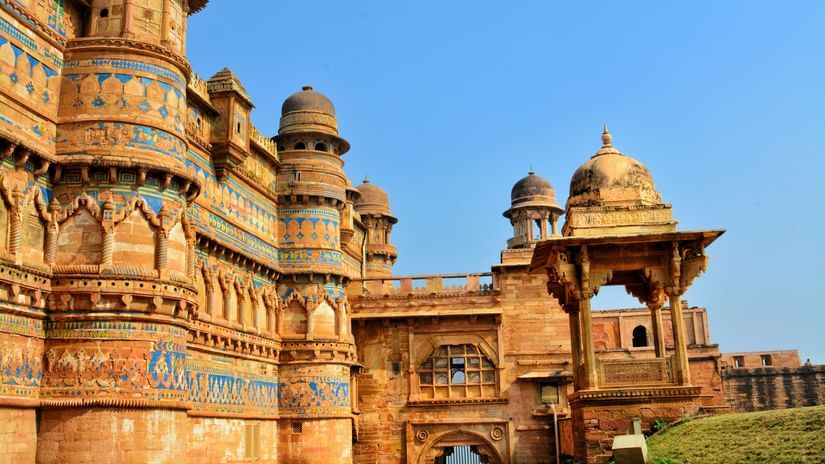
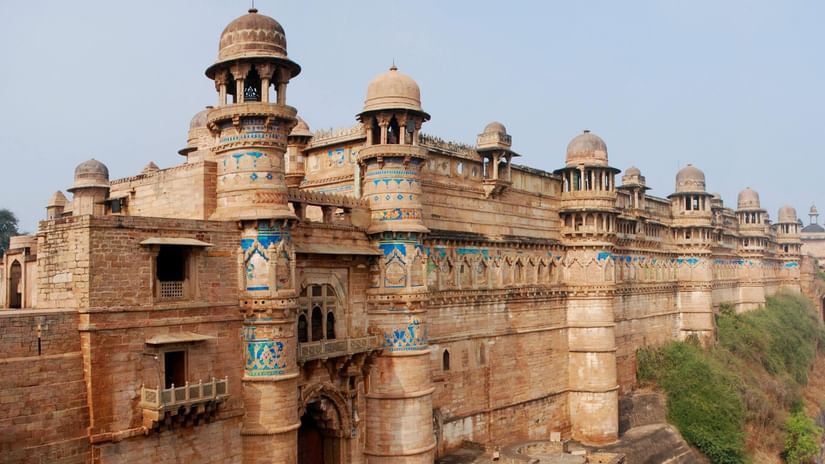
Beyond these temples, the fort’s massive walls, gates, and fortifications continue to narrate tales of strategy, strength, and royal ambition. The history of Gwalior Fort is also etched in stories of courage and spiritual resilience. Most notably, Bandi Chhor Divas, the ‘Day of Liberation’, commemorates Guru Hargobind’s release from the fort along with 52 imprisoned kings. The sacred Gurudwara Data Bandi Chhod within the complex marks this moment, celebrated each year with illuminated gurdwaras, continuous kirtan, langar, and festive processions. In this way, the fort remains not only a monument of architectural and military prowess but also a living symbol of devotion, resilience, and cultural heritage.
2. Jai Vilas Palace: Royal Lifestyle and Architectural Grandeur
After exploring the formidable ramparts and historic halls of Gwalior Fort, a short drive brings visitors to the 19th-century grandeur of Jai Vilas Palace. Designed by Lt. Col. Sir Michael Filose, the palace blends Mughal and Medici styles, with Tuscan, Italian-Doric, and Corinthian elements across its three storeys. Its famed Durbar Hall, adorned with gilt furnishings, enormous chandeliers, and a vast carpet, is complemented by opulent rooms, a royal kitchen, and preserved bedrooms reflecting the grandeur of the Scindia family. Unique features include cut-glass furniture, a ladies-only swimming pool, and a model silver train that carried brandy and cigars around the dining table. The palace gardens, fountains, and elaborate architecture complete this extraordinary example of royal heritage.
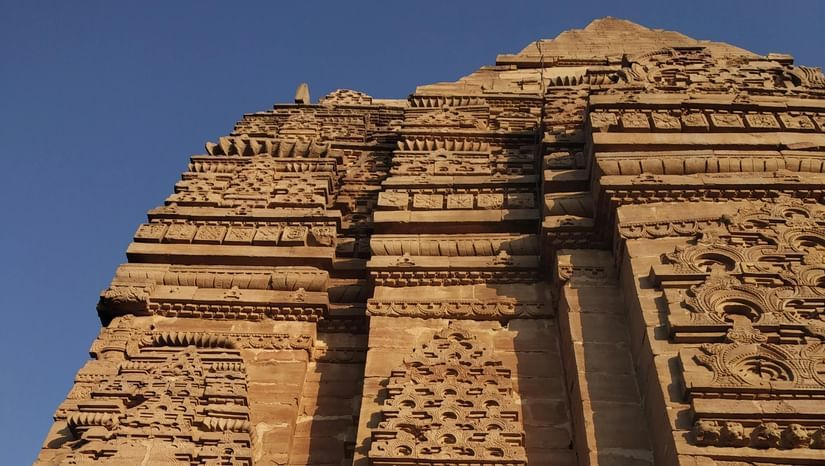
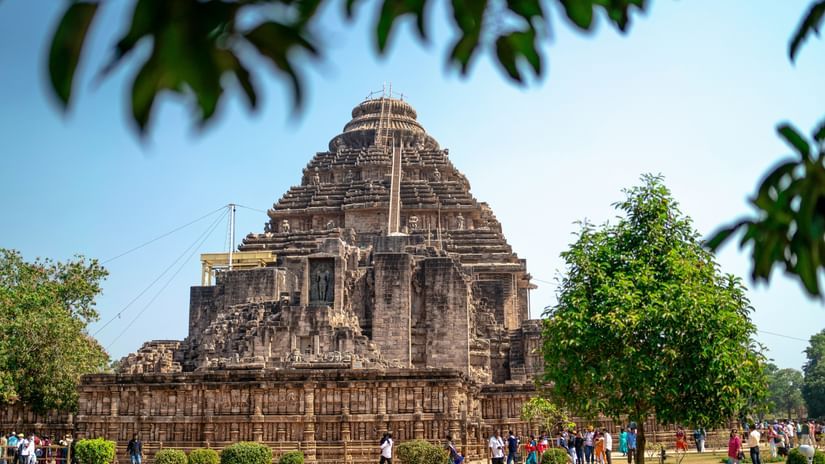
3. Konark Sun Temple: Devotion and Architectural Mastery
Rising majestically on the shores of the Chandrabhaga River, the 13th-century Konark Sun Temple in Odisha is a sublime testament to devotion and artistic brilliance. Commissioned by King Narasingha Deva I of the Eastern Ganga dynasty, the temple is dedicated to the Sun God, Surya, and is designed as a colossal chariot, complete with intricately carved stone wheels and horses. Though much of the shikara tower now lies in ruins, the surviving structures showcase exquisite Kalinga architecture adorned with detailed iconography, mythological motifs, and erotic kama scenes. Known to European sailors as the ‘Black Pagoda’, the temple remains a UNESCO World Heritage Site and a vibrant pilgrimage destination, especially during the annual Chandrabhaga Mela.
4. Sas Bahu Temples: Architectural Sophistication and Design
The Sas Bahu Temples within Gwalior Fort offer a glimpse into 11th-century craftsmanship. Built between 1090 and 1093 by King Mahipala of the Kachchhapaghata dynasty, the larger temple, Saas, was built in honour of the king’s wife, while the smaller, Bahu, was intended for his daughter-in-law, both devoted to the deities Vishnu and Shiva. Though much of the tower and sanctum have been destroyed over centuries of invasions and conflict, the jagati platform, entrance porch, and mandapa reveal the sophistication of their design. The three-storeyed structures, following a central cluster layout, display elements of the North Indian Bhumija style, with intricately proportioned spires that once rose like beaded garlands, reflecting the artistic mastery of the era.
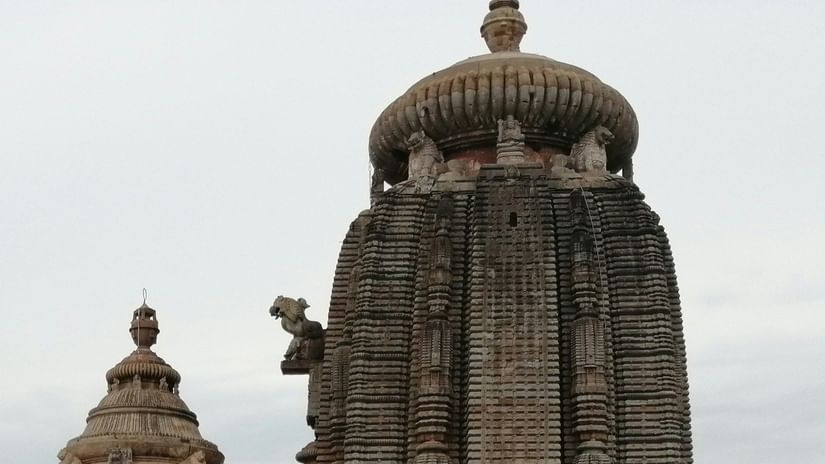
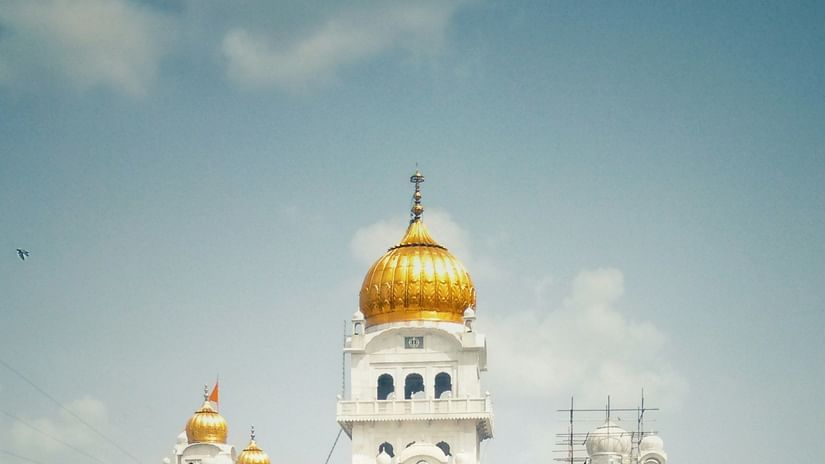
5. Gurudwara Data Bandi Chhod: Celebration and Spiritual Legacy
The history of Gwalior Fort is not only written in stone and ramparts but also in the stories of courage, devotion, and spiritual resilience that unfolded within its walls. Bandi Chhor Divas, the ‘Day of Liberation’, marks Guru Hargobind’s release from Gwalior Fort along with 52 imprisoned kings. The sacred Gurudwara Data Bandi Chhod, within the Gwalior complex, commemorates this moment of resilience and compassion. Historical accounts tell of the Guru’s calm strength and spiritual authority, which earned the respect of Emperor Jahangir and secured the release of many prisoners. Falling in autumn, often alongside Diwali, the occasion is celebrated with illuminated gurdwaras, continuous kirtan, langar, and festive processions, making it one of Sikhism’s most significant celebrations.
6. Tansen’s Tomb: Musical Legacy and Cultural Tribute
From the grandeur of Gwalior Fort and the spiritual significance of Gurudwara Data Bandi Chhod, the city’s rich cultural tapestry extends to the world of music with Tansen’s Tomb, Memorial of the Great Musician. Born in Gwalior, Tansen, also known as Sangeet Samrat or ‘Monarch of Music’, began his musical journey under the patronage of Raja Man Singh Tomar and later flourished in the court of Raja Ramchandra Singh of Rewa. His extraordinary talent soon earned him a place among the Navaratnas of Mughal Emperor Akbar’s court, where he became renowned for his vocal compositions, instrumental mastery, and innovative contributions to Hindustani classical music. Today, the tomb serves not only as a memorial but also as the centrepiece of the annual Tansen Music Festival, celebrating his enduring legacy and influence across generations of musicians.
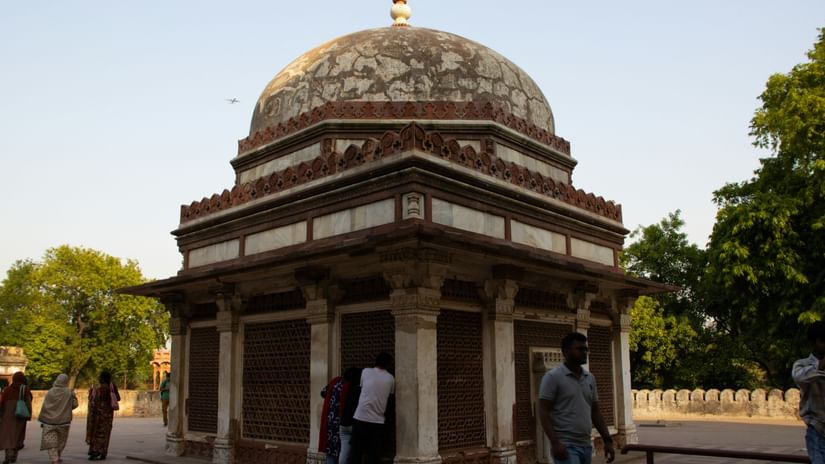
Exploring the Timeless Charm of Gwalior
1. Gwalior in Melody & Light
December evenings in Gwalior shimmer with the soulful notes of Hindustani classical music at Tansen’s Tomb, where the legendary court musician of Akbar is honoured every year. The five-day Tansen Samaroh in nearby Behat village draws maestros and music lovers from across India and beyond, filling the crisp winter air with vocal and instrumental performances.


The festival turns the city into a living symphony, where art and culture come alive at every corner. With vocal and instrumental performances filling the crisp winter air, the festival transforms Gwalior into a living symphony of art and culture. As the city’s history comes alive through its monuments and melodies, it offers experiences that delight all the senses. When the sun dips behind the ancient walls of Gwalior Fort, the evening light and sound show brings centuries of stories to life. From 7:30 PM to 8:55 PM, the massive fortress becomes a storyteller, its walls illuminated in vibrant hues as the legendary voices of Bollywood icons Amitabh Bachchan and Kabir Bedi narrate tales of battles, legends, and royal drama. Tickets are affordable, making it easy for every visitor to step into this mesmerising slice of history.
2. Handloom Heritage and Artisan Stories
No visit to Gwalior is complete without shopping and wandering through its vibrant spaces where local artisans showcase their craft. While permanent handicraft bazaars are rare, temporary exhibitions and markets bring the city’s artistic heritage to life. Here, you can discover Chanderi and Maheshwari silk, intricate stone carvings, and beautifully crafted pottery, each piece telling its own story. The Dastkari Haat Bazaar at Mela Ground is a must-visit, especially during the Kaarigari Handlooms & Handicrafts exhibition, where a variety of Indian crafts come together under one roof. The Mela Ground hosts fairs and events throughout the year, offering a chance to meet skilled artisans and pick up unique treasures. Look out for local women artisans preserving pottery traditions and individual craftsmen offering stone and lacquered works, every piece a window into Gwalior’s rich creative legacy.
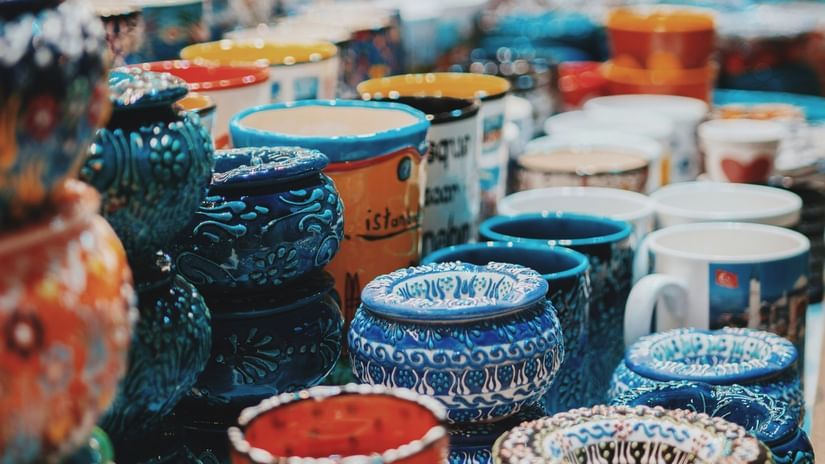
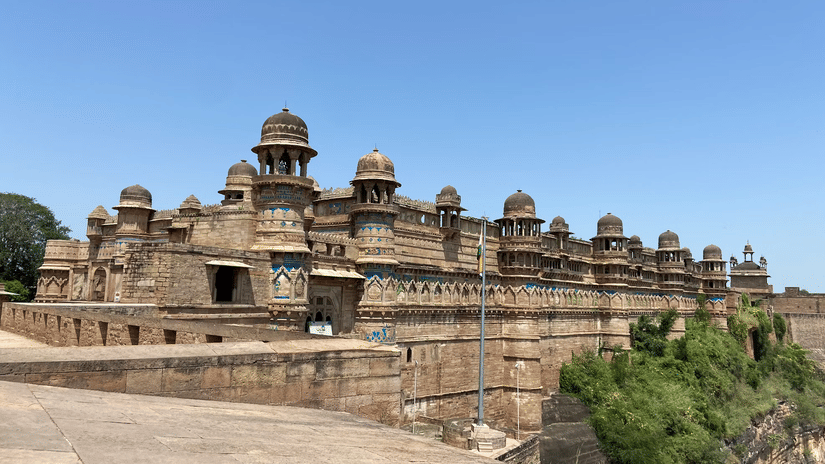
3. The Best Time to Visit Gwalior
With so many vibrant experiences waiting at every corner, the best time to visit Gwalior in all its glory is during winter, from October to March. The weather turns pleasantly crisp, ideal for wandering the mighty fort walls, marvelling at palace chandeliers, or losing yourself in the melodies of a cultural evening. This is also when the city’s festivals shine brightest, music echoing through courtyards, bazaars bursting with colour, and heritage trails unfolding without the weight of the summer sun. By contrast, summers can be harshly hot, and monsoon rains, though refreshing, sometimes make travel unpredictable. For those who wish to experience Gwalior at its truest, winter provides the perfect canvas, where history, architecture, and culture blend seamlessly into unforgettable memories.
Experience Gwalior’s Regal Heritage at Deo Bagh
1. Deo Bagh: Rest Where History Lives
After a day spent exploring Gwalior’s bustling bazaars, marvelling at the fort’s dazzling light-and-sound show, and soaking in the melodies of the Tansen Samaroh, step into a heritage destination where the 17th-century legacy of the Marathas and modern-day hospitality seamlessly intertwine. Neemrana’s Deo Bagh, a 17th-century garden retreat, offers a timeless experience. As you wander through its lush green lawns where peacocks roam freely, you’ll discover two in-house Maratha temples, two ornate cenotaphs, and a charming pavilion with 36 arched gateways, all nestled within the tranquil Nau Bagh, a garden thoughtfully divided into nine serene sections.
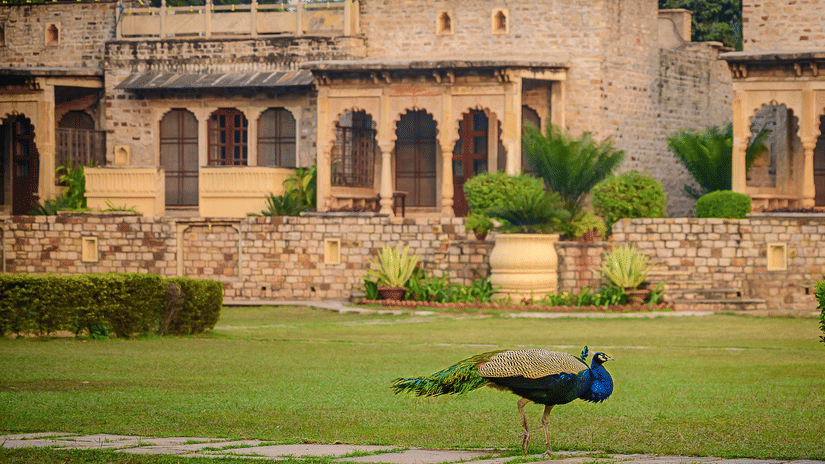
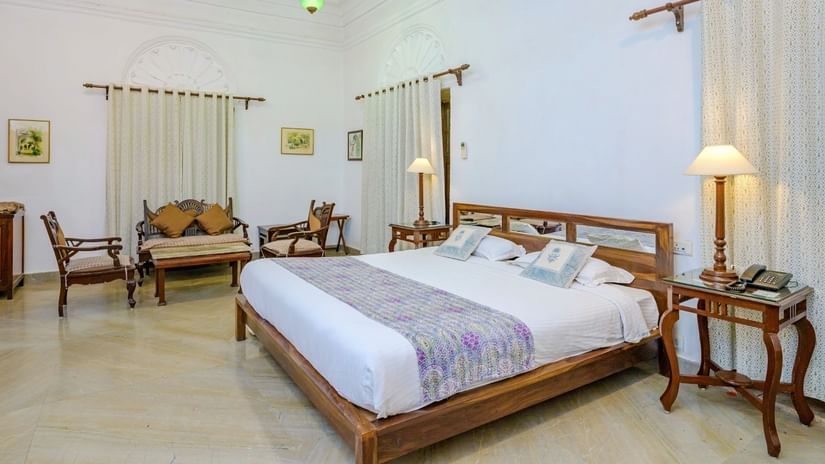
The 15 vintage rooms and suites at Deo Bagh carry the timeless charm of the bygone era, offering an experiential vacation that’s both intimate and timeless. Each room preserves the character of the past with period furniture, while thoughtfully blending in modern comforts like air-conditioning and Wi-Fi, allowing you to unwind and stay connected for any urgent meetings or tasks that may arise while you’re on holiday. Dining here is an experience in itself. Tucked within the 17th-century Zenana wing, the restaurant celebrates fresh local ingredients, bringing North Indian, Maratha, and select Continental flavours to life. Meals are served against a backdrop of ancient arches and whispering corridors, where every stone seems to hold a memory. At Deo Bagh, you don’t just check into a hotel, you step into a living story.
1. Where Royalty Welcomes You
At Neemrana’s Deo Bagh, history is paused to be relived through a heritage experience. Wander through lush landscaped gardens, see and touch the intricate architecture of the 17th-century Maratha temples, cenotaphs, and centuries-old pavilions, and you’ll feel the culture and tradition come alive in the local cuisine, room artefacts, paintings, and the restored architecture of Gwalior’s most sought-after garden hotel. Though tucked away in a serene and peaceful setting, Deo Bagh keeps you close to the city’s iconic forts, palaces, and cultural landmarks, making it a thoughtful base for travellers who want to soak in heritage at their own pace. Here, every corner has a story to tell, a retreat where the past and present coexist naturally, inviting you to slow down, wander, and simply be.
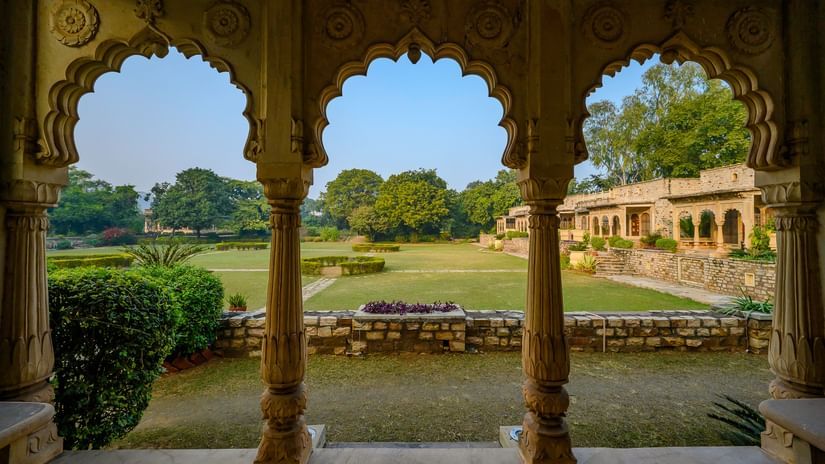
A journey through places of interest in Gwalior reveals a city alive with architecture, royal legacies, and vibrant cultural traditions. From the awe-inspiring fort to the melodies of Tansen, every corner tells a story. Enhance this heritage experience with an experiential stay at Deo Bagh – 17th Century, Gwalior, where the history of the Maratha era, the warmth of the local Neemrana team, and lush green gardens create memories of a lifetime, all within reach of Gwalior’s finest sightseeing places.